-
I’d like to say I’m looking forward to a day of solid coding, but the last few times I wrote that, I ended up with a day full of annoying meetings. So, do I tempt fate and write that I’m looking forward to a day full of annoying meetings? Not sure I can say that, even if it is just to avoid a jinx.
-
When I heard about what CNET is doing to their old articles it strikes me as to how relying solely on SSO is a bit of a looser’s game. Ok, I might not be your typical web user, but I almost never look for the latest news by making a web-search. I visit or subscribe to sites that I trust, that have a good user experience, and don’t bombard me with crummy ads.
I haven’t visited CNET for a while but seeing them do this this, along the crazy idea of using AI to generate stories, it’s clear that they’re not interesting in building up trust, instead going for the get-top-search-ranking-and-stuff-me-full-of-ads business model. That might get people to click once or twice, but why would they come back? I can’t imagine web users not learning that CNET’s articles are not worth the crappy user experience.
-
Aargh! I’ve been misspelling “aargh” all this time (two A’s, not one).
Incidentally, the word “misspelling” looks like a misspelling of “miss-spelling”. Looks like it’s missing an S. But it’s correct, according to Apple’s dictionary.
-
Aargh! I haven’t had time to write up new work or even finish the work I’ve picked up because I’ve been in meetings and discussions around the work I’ve already planned. Meanwhile the backlog is starting to dry up and people are starting to look for things to do. It’s overwhelming.
Need some focus time. I’ll break for lunch, then I’ll be turning off Slack notifications for the afternoon so I can get my stuff finished.
I don’t know why I’m writing this here. Not sure how this is in any way interesting to anyone else. I’m sorry. Just need somewhere to release some pressure.
-
Multi-carat support in text editors have been a huge game changer to my coding workflow. I love them. I use them all the time, and I miss them when I’m in an editor that doesn’t support them.
-
Ok, mark the date: first time I’ve seen someone in public with a foldable phone. The narrow screen is a bit of a giveaway. I knew they would be thick but I didn’t realise how narrow they are folded up. I’m guessing that’s the point though. 🤷♂️
-
Giving the Scribe editor a try. Works great. Seems like a perfect editor for those focused writing sessions where you need as few distractions as possible.
-
Oof, attended a council meeting this evening about a development that is planned down the road of my place. Must say, I know of better ways to spend a Monday evening. The council decided to let the development go ahead, which is very unfortunate. There are avenues of appeal though, and quite a large level of opposition to this, so hope is not lost.
I’ll be frank, I didn’t want to go this evening. I was kinda expecting this outcome, and feeling all that (justifiable) emotion was uncomfortable. I felt it was important to attend nonetheless. All the Pressfield and Godin I’ve been reading recently seemed to meld together into a simple though along the lines of “yeah, it’ll probably be uncomfortable and ultimately won’t change anything. Do it anyway”.
-
Why does AWS do things like limit the size of IAM role names to 64 characters? Why not something like 256 characters? I cannot deploy something because a service name is slightly too long, so now I need to consider whether to break the naming convention, or just skip deploying it.
-
Went to the Heide Museum of Modern Art with Mum and Dad today. Was really good. Found some of the exhibits to be a little challenging (which, I guess, is the point). But the history tour was great and that walk around the grounds was lovely. Can recommend if you’re ever around the Heidelberg area.
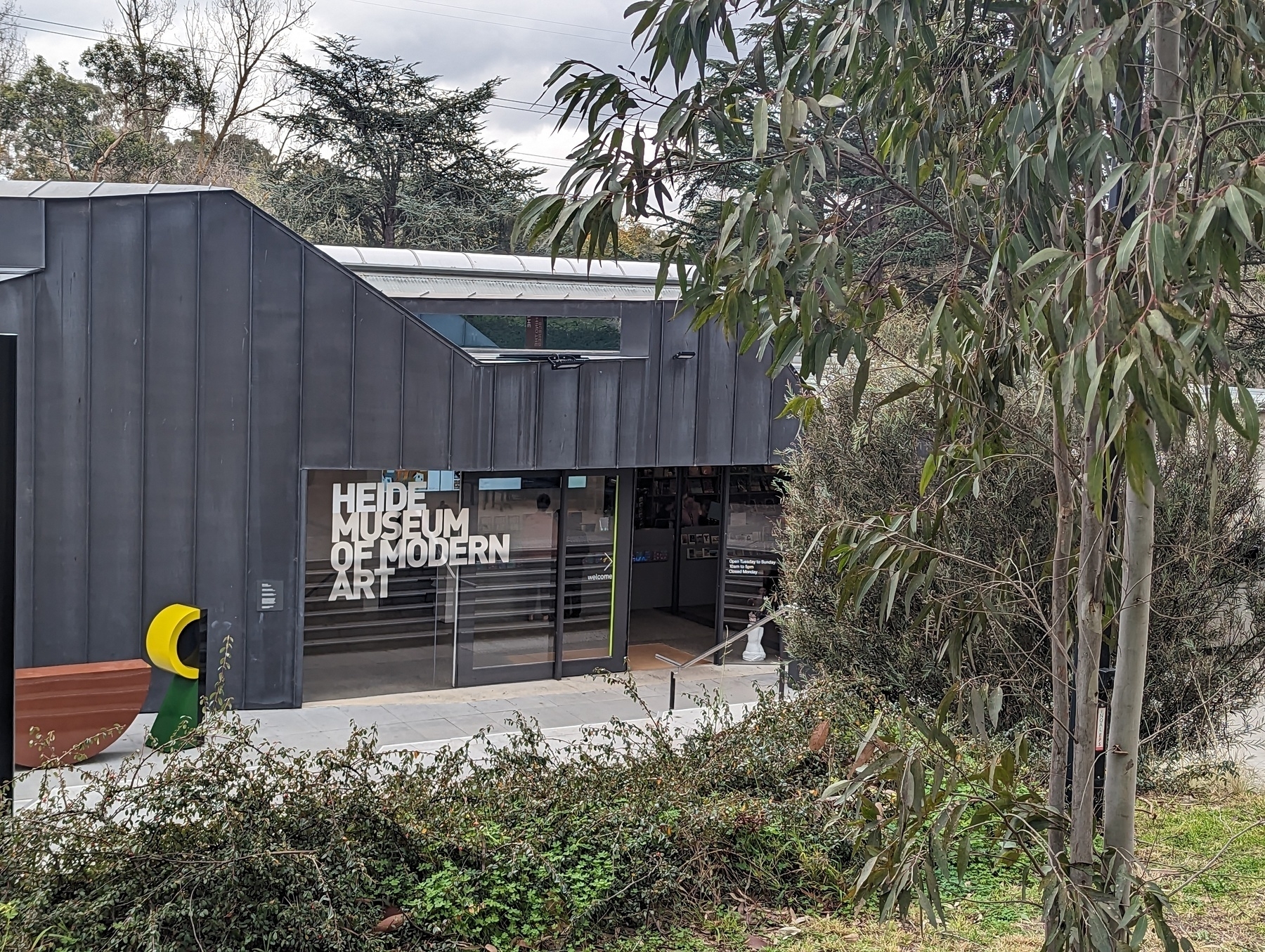

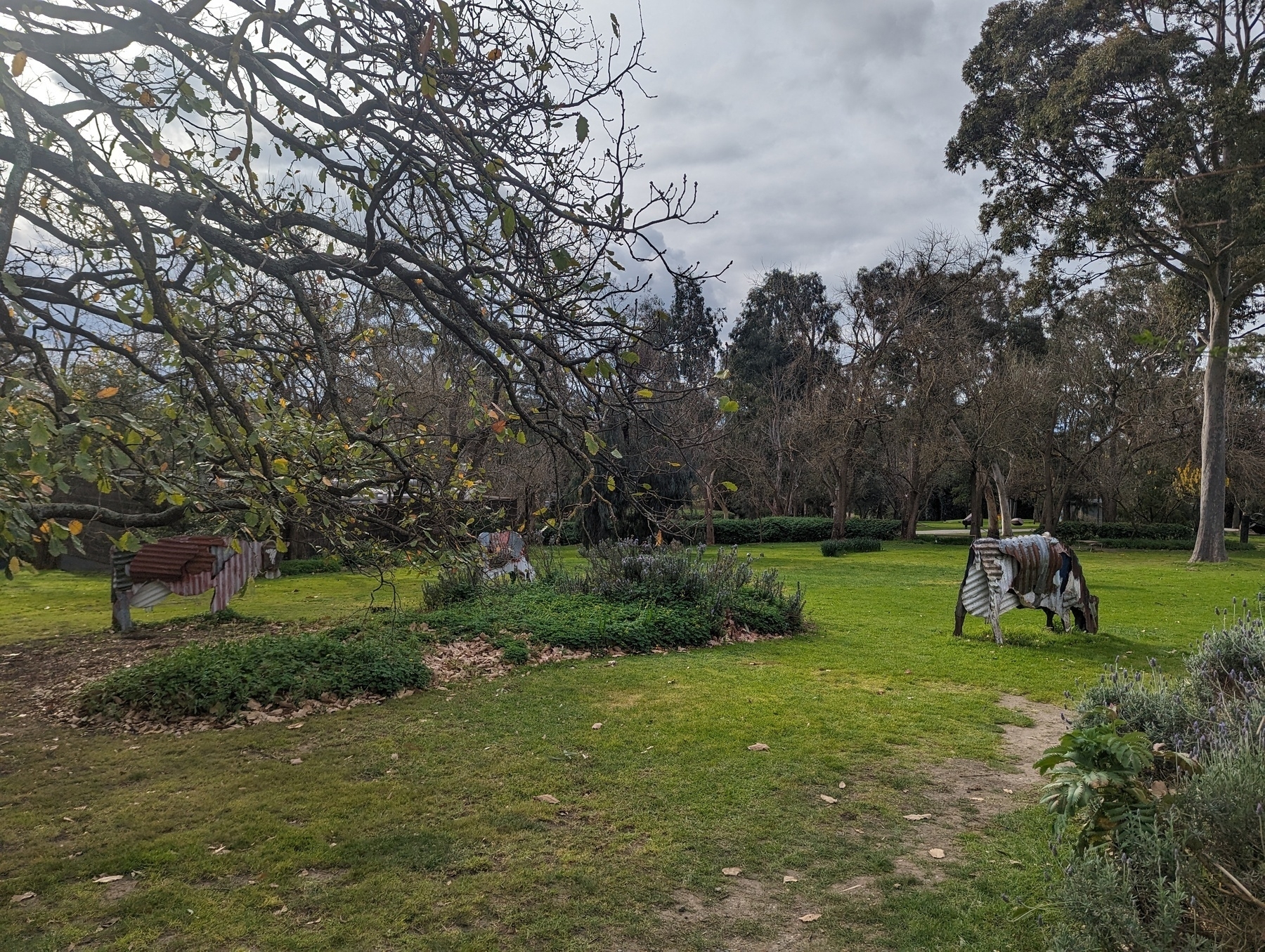
-
Working on my Chips Challenge “fan game” this morning. Added the notion of “lower thirds,” which will show text at the bottom of the play field. I’m hoping to use it for narrative or way-finding, like here in this hub level:
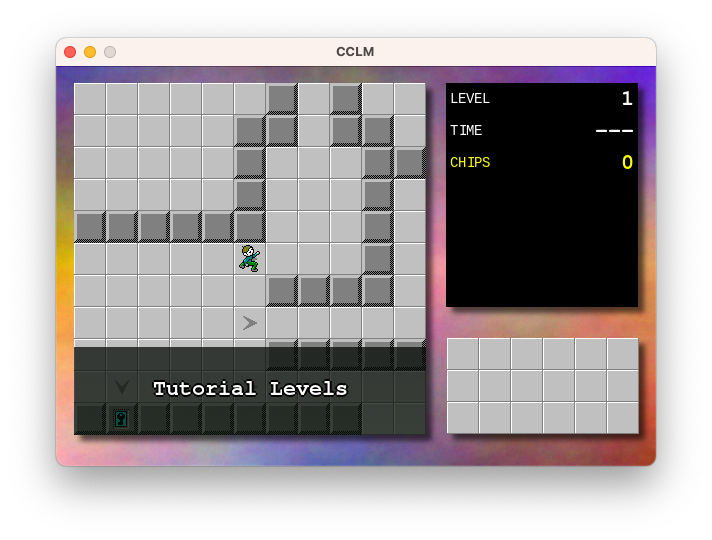
Also working on puzzle design. There’s about 19 or so “real” puzzles but I’m wondering if it’s worth adding a few tutorial ones for those that have never played the original Chip Challenge before. I’ve done about 5 such puzzles and I think I need to add maybe 3 or 4 more to cover everything I’m hoping to demonstrate. I wish I liked puzzle design more than I like tinkering on the engine.
Of course, the big question is why I’m working on this at all. There is, for lack of a better word, a vision for this, in terms of narrative and structure, but this project has been in development on and off for about 9 years or so, and I’m wondering if it’s time to just stop working on it altogether. I really am starting to get sick of it, in a way. And yet, this project has shown remarkable staying power over that time that I feel like if I don’t actually wrap it up, it’ll just continued to be worked on. It feels like the only way to end this project is to finish it, in one way or another.
So I’ll set myself a dead-line: something releasable in two weeks, and actually released a week after that. After that, no more! I’ll work on something else.
-
Number of consecutive Saturdays where I’ve been swooped by a noisy minor: 2
-
Happy Friday everyone. It’s the end of a busy week at work. Wish I can say more about what we’ve been working on. If the stars align, I may be able to, in time. But until then, here’s hoping for a quiet weekend.
-
On a train. Heard an announcement from the Metro control center: “yadda, yadda, follow us on Twitter.” Wondering if anyone outside of tech news readers know that the service has been rebranded. It’s either that or they’re saying to themselves, “yeah, I’m not gonna call it that.”
-
Sat down on a park bench to reply to someone and this magpie came running up to me. Stayed for a minute then moved on after he realised I had no food for him.

-
A thought just occurred to me while reading this post: all the effort that goes into optimising the browser for bloated, “commercial” webpages pay off in spades for sites with a lighter presence. If they can make those crummy, script-laden page usable, they can make the simpler ones sing.
-
On Tools and Automation
The thing about building tools to automate your work is that it’s hard to justify doing so when you’re in the thick of it. Easy to see all the time you save in the aggregate, but when you’re faced with the task in your day to day, you’re just as likely to say “I can build a tool which will let me do this task in a couple of seconds, but it’ll take me an hour to build it verses the 5 minutes it’ll take for me to just do the task. Continue reading →
-
If there’s any indication of the staying power of Twitter the brand, it’s hearing podcasters continue to refer to the service as “Twitter” a week and a half after it was rebranded “X”. Will be interesting to see how long this keeps up.
-
I wonder if a read-it-later service that could work for me would be one that’ll show a random article once a day on a private RSS feed. I put links into Instapaper and they’re never seen again. But I’m always in FeedBin or NetNewsWire, so I’m more likely to read a post that’ll show up there.
-
A couple of updates from my day at work today, in no particular order.
Still working on that design task. I’m not quite done yet, but I did spend today going over some of the earlier details, and I found that if I were to add a domain specific language (DSL) to one of the data models, it simplifies other areas of the design. I know how fraught adding DSLs can be, especially given my eagerness to add DSLs to everything I touch (a bit of an exaggeration, but not quite). But here it seems to work, at least on paper. I guess that’s a good hint to push for a DSL here when the design goes up for review. We’ll see what my colleagues say.
Speaking of colleagues, someone asked me how I did something in DynamoDB and I shared with her my terminal DynamoDB tool. She downloaded it and gave it a try, and it looks like it clicked with her. So you can imagine how stoked I feel hearing this! Will ride these good vibes for a little while, at least for the next hour.
-
Attempting to design an app icon for a Chips Challenge fan game I’m working on. Going for something that looks like the fireball sprite in the original game with a hint more realism and tinted in the colour blue. For reference, here’s the original fireball sprite:
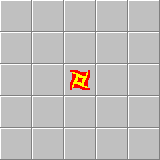
And here’s my attempt:

I started with Stable Diffusion to get the base image:

Prompt: a blue plasma fireball shaped like a throwing star with four points on a white background, pixel art Then imported into Acorn to rotate it, colourise it, and distort it to look a bit closer to the original sprite.
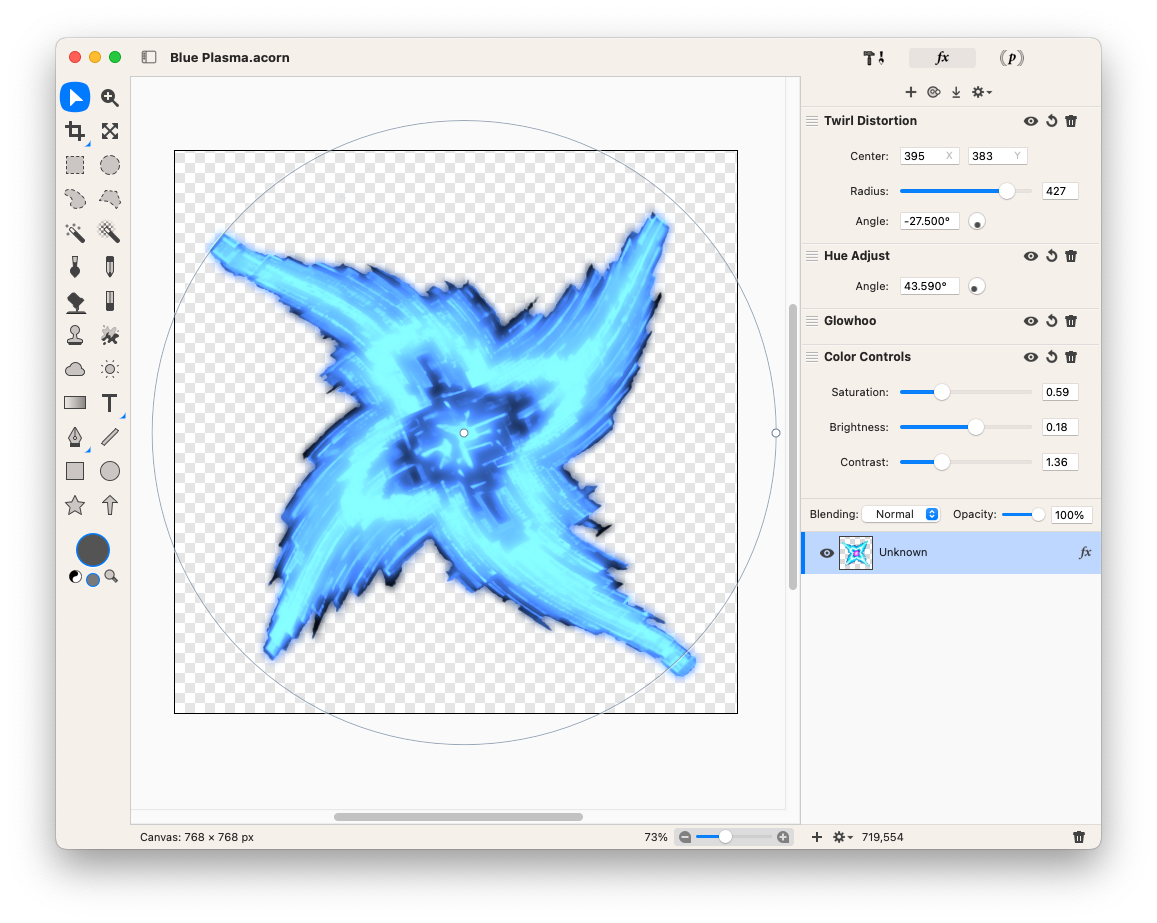
Desaturating the original image got rid of the purple centre, then applying the Glowhoo and Hue Adjust effect recolourised it to the blue I was looking for (I’m not sure what the Glowhoo effect does, but it seems to adjust the colour based on the pixel intensity, so it was good enough for what I wanted). Finally, I added a Twirl Distortion effect to achieve the slight warp in the star.
And yeah, it’s not going to win any design awards, but it’s good enough for now.
Oh, and just for kicks, here was my first attempt of producing the sprite using Affinity Designer.

That’s definitely not going to win any design awards. 😂
-
Greg Morris wrote an excellent post about personal blogging that resonated with me. I know this is something that I struggle with. There are many posts on my blog that are formal and impersonal. And I hate re-reading them: they’re super boring. On the flip side, seeing posts about my day (sans post about work), of photos and videos I’ve taken, are a joy to relive. I know these are posts I tend to prefer reading on personal blogs of others. I’ll try to write more of those.
Related: Nobody cares about your blog, via. Skoobs.
-
Design task at work. Would be so sweet to junk what we have at the moment, which is a rat’s nest of dodgy code and weird behaviours, with something new. Unfortunately, the deadline is tight so I think I’ll need to keep what’s already working. Also, there’s the second system syndrome to be aware of.
-
It’s great that MacOS comes with virtual machine support out of the box for Apple Silicon Macs. Makes this sort of notarisation testing so easy to do now. I’m using VirtualBuddy to create and manage these VMs, which is a really nice app.
-
Success! Managed to get a Go app built, signed, and notarised all from within a GitHub Action. It even cross-compiles to ARM, which is something considering that it’s using SDL. Here’s the test app being downloaded and launched in a VM (ignore the black window, the interesting part is the title).